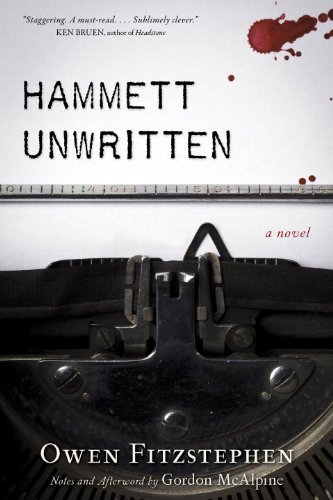Hammett Unwritten
The one word that comes to mind when reading Owen Fitzstephen’s Hammett Unwritten (as discovered and edited by Gordon McAlpine) is “atmosphere.” And the thick atmosphere, layered with the tough guy-talk of 1930s noir and topped with the clever repartee of The Thin Man, is epitomized by the black statuette that Hammett made famous in The Maltese Falcon, the element around which this novel is built. The story opens on a darkened road on Long Island on New Year’s Eve, 1959, as Dashiell Hammett, pistol in hand, prepares to break into a house. From there the reader is taken back in time, as Hammett moves from a private detective in 1920s San Francisco to a legendary author to a target of Joe McCarthy’s Red hunt to a federal penitentiary. The Falcon remains as the central figure in this drama of a man’s life, ultimately bringing us back to that Long Island night. To say much more will take away from the reader’s pleasure in discovering this little gem of a book and learning how that counterfeit statuette drives the novel to its ultimate conclusion, and a well-crafted conclusion it is.
The work is presented as a manuscript found by author Gordon McAlpine in the Lillian Hellman collection at the Harry Ransom Center at the University of Texas. It’s a device that has been botched by other writers, but McAlpine pulls it off deftly. If you seek an excellent portrayal of Hammett, if you like noir, or the trials and tribulations of writers and artists during the McCarthy era, then Fitzstephen’s Hammett Unwritten is highly recommended.










